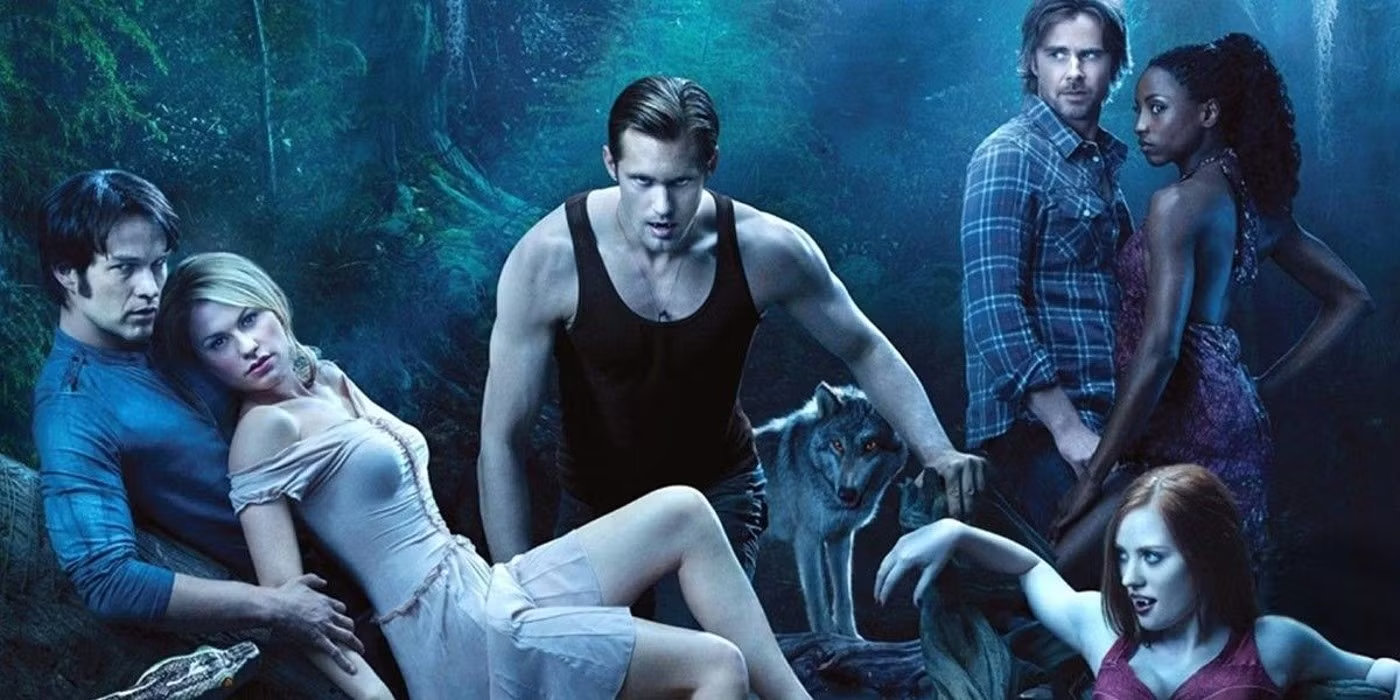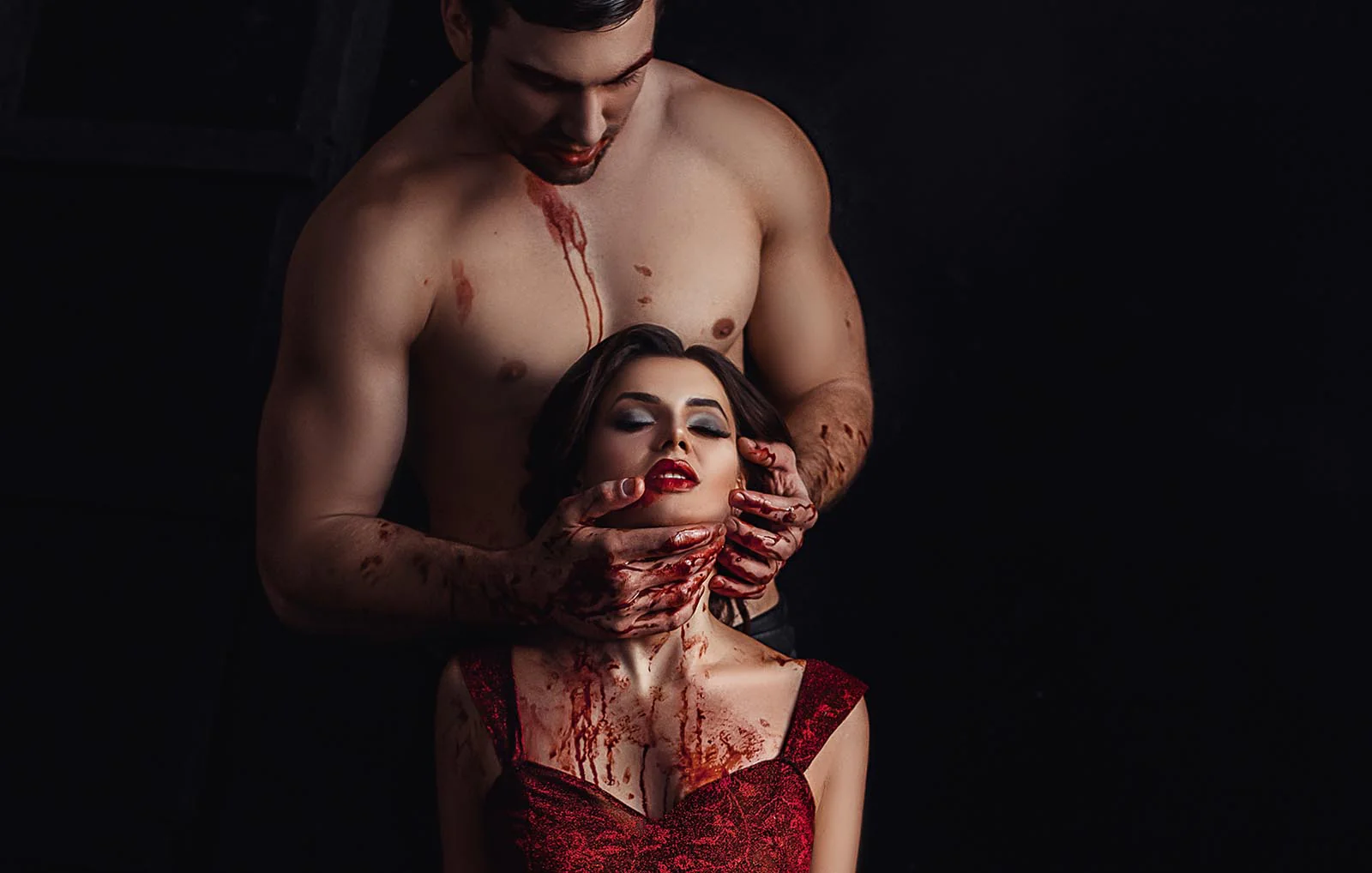Vampire Fetish Cultural Roots, Psychological Insights, and Modern Manifestation
Love it or hate it, the vampire fetish is a phenomenon that has pervaded our popular culture quite significantly. This fascination has given rise to a vibrant scene, a community deeply intertwined with vampire culture and fetishes, where individuals navigate their identities and lifestyles, often in connection with the BDSM community. From the sinisterly charming Dracula to the romantic Edward Cullen, our fascination with these mythical creatures has shown in movies, books, TV shows, and even some sexual preferences. However, it’s important to approach this topic with an open mind, striving to understand and not judge.
Cultural Roots of Vampirism and The Vampire Fetish
Historically, vampires have been feared as deadly predators. These folklore beasts hunted during the night and sustained their life-force by drinking human blood. However, the portrayal of vampires began to change, especially with the advent of films and literature. The modern vampire became a brooding, romantic, and rebellious figure, oozing with mysterious allure.
Many people found this modern interpretation of vampires intriguing, leading to what we now call a vampire fetish. This fascination ranges from a more benign interest in vampire-themed literature and media, to having a full-blown sexual fascination related to vampires, or even adopting a role-playing lifestyle as a vampire.
Psychological Interpretation
When it comes to the psychology behind a vampire fetish, it’s multi-faceted. On one level, the allure of vampires often lies in their power and mystery, qualities many people find alluring and sexy. They represent the taboo, the clandestine, and the forbidden, which obviously brings with it a certain erotic, arousing mystery.
For others, the fascination is not with vampires per se, but with specific elements associated with vampirism such as dominance, submission, immortality, control, or the exchange of energy (via blood-drinking in vampire lore). The complexity of these elements and the range of interpretations they allow could be the reasons behind the wide array of manifestations in vampire fetish.
Vampire Archetypes and Characteristics
Vampire archetypes and characteristics play a significant role in shaping the vampire fetish and BDSM community. These archetypes often draw inspiration from various cultural and literary sources, including folklore, mythology, and popular media. Some common vampire archetypes include:
- The Seductive Vampire: This archetype is characterized by a charming and charismatic individual who uses their allure to lure victims into their world. The seductive vampire embodies the essence of temptation and desire, making them a central figure in many vampire fantasies.
- The Dominant Vampire: Marked by a powerful and controlling demeanor, the dominant vampire exercises dominance over their victims or partners. This archetype appeals to those who are drawn to power dynamics and the idea of submission within the context of vampirism.
- The Romantic Vampire: Brooding and introspective, the romantic vampire is often driven by a desire for love and connection. This archetype resonates with individuals who are captivated by the notion of eternal love and the emotional depth of vampire characters.
These archetypes can serve as a starting point for individuals exploring the vampire fetish and BDSM community, allowing them to tap into their desires and fantasies. By embodying these characteristics, participants can create immersive and fulfilling experiences that align with their personal interests and the broader cultural fascination with vampires.
Modern Manifestations
Today, the vampire fetish finds expression in numerous ways – from erotic fiction, movies, and role-playing games to ‘real-life vampires’ that incorporate aspects of vampirism into their lives and sexual practices. Some people role-play vampire scenarios with their partners, while others might engage in more extreme activities such as simulated or actual bloodletting. It is crucial to emphasize the importance of communication between partners during vampire play fantasies to ensure mutual consent and understanding.
In the realm of pop culture, the Twilight series, True Blood, and The Vampire Diaries, with their attractive and sometimes tormented vampire characters, have given way to an entire industry of vampire fetish erotica.
Online communities like the Vampire Community Network (VCN) offer spaces for people to discuss, share, and learn about vampire-related fetishes. Niche dating sites have also emerged catering to people fascinated by vampires.

The Influence of Popular Media
Popular modern films and television series have significantly contributed to the mainstreaming of the vampire fetish. Here the emphasis on the vampire character’s sexual symbolics is far more than their bloodthirsty tendencies.
Twilight Saga
The “Twilight” saga is perhaps the most notable example, introducing a new generation to the idea of vampire-human romance. Edward Cullen, portrayed by Robert Pattinson, is the epitome of dangerous allure, with his cultivated good looks, undying devotion to Bella Swan, and his struggle to suppress his vampire instincts. This complex and intricate relationship dynamic sparked an immense fan following, some of whom developed a vampire fetish or found existing ones strengthened.
True Blood
The HBO series “True Blood” played with the idea of “forbidden love” by placing vampires in the society, openly living among humans. Characters like Eric Northman and Bill Compton demonstrate power, dominance, and raw sexuality unchecked. They became the forbidden apple, thus creating a sense of allure and sexual attraction to vampire characters.
Vampire Diaries
The “Vampire Diaries” took a similar approach with the Salvatore brothers, Stefan and Damon, and their love triangle with Elena Gilbert. Each brother possesses different attributes – Stefan with his brooding, gentle, and controlled restraint; Damon with his unrestrained impulsivity and lust for life (and blood). By depicting these characters as attractive, intelligent, and emotionally complex beings, the show often emphasizes the erotic nature of their vampiric nature, intensifying audience fascination and attraction towards vampires.
Interview with The Vampire
The film “Interview with The Vampire,” featuring Tom Cruise, Brad Pitt, and Antonio Banderas, brought a sense of classical Gothic romanticism to the vampire genre. Their characters exuded an air of sensuality and seduction, which was ideologically new and drove the narrative of vampires as sexually appealing beings.
Buffy the Vampire Slayer
Lastly, “Buffy the Vampire Slayer,” the cult classic, played significantly in this area. Buffy’s relationships with Angel and Spike, both vampires, became focal points throughout the series, highlighting the forbidden love theme and portraying vampires in a non-monstrous light.
In conclusion, each of these popular vampire-themed movies and series appeal to the audience’s interest in danger, eroticism, and forbidden romance, thereby engaging and arousing their vampire fetish on multiple fronts. From bringing the vampire-human relationship to the forefront or portraying vampires as sexually appealing beings, they’ve all played significant parts in the modern manifestation of Vampire fantasies.

Vampire Kink and BDSM Community
The vampire kink and BDSM community is a vibrant and diverse group of individuals who share an interest in exploring the intersection of vampirism and BDSM. This community provides a safe and supportive space for individuals to express their desires and engage in consensual play.
Within the community, individuals can find like-minded partners and engage in various forms of play, including biting, blood play, and role-playing. The allure of vampirism combined with the structured dynamics of BDSM creates a unique and thrilling experience for participants. The community also provides a platform for individuals to share their experiences, knowledge, and resources, helping to foster a sense of belonging and connection.
Some popular events and gatherings within the vampire kink and BDSM community include:
- Vampire-themed parties and events: These gatherings offer a space for individuals to dress up, role-play, and immerse themselves in the vampire fantasy. They often feature themed activities, performances, and socializing opportunities.
- BDSM workshops and classes focused on vampire-themed play: These educational sessions provide guidance on safely incorporating vampire elements into BDSM practices. Topics may include safe biting techniques, blood play safety, and role-playing scenarios.
- Online forums and social media groups: Dedicated to the vampire kink and BDSM community, these platforms allow individuals to connect, share experiences, and seek advice. They serve as valuable resources for those looking to explore their interests further.
By participating in these events and engaging with the community, individuals can deepen their understanding of vampire kink and BDSM, while also finding support and camaraderie among like-minded enthusiasts.
Blood Play and Safety Considerations
Blood play is a popular aspect of the vampire fetish and BDSM community, involving the use of blood or blood-like substances in play. However, it’s essential to approach blood play with caution and respect for safety considerations.
Some key safety considerations for blood play include:
- Using sterile equipment and supplies: To minimize the risk of infection, it’s crucial to use sterile needles, lancets, and other tools. Proper hygiene practices, such as cleaning the skin before and after play, are also essential.
- Ensuring informed consent: All participants must be fully aware of and consent to the risks involved in blood play. Open communication about boundaries, limits, and health concerns is vital to ensure a safe and consensual experience.
- Establishing clear boundaries and guidelines: Before engaging in blood play, it’s important to discuss and agree on specific boundaries and guidelines. This includes deciding on safe words, limits on bloodletting, and aftercare procedures.
- Providing a safe and supportive environment: Blood play should take place in a controlled and safe environment. Having first aid supplies on hand and knowing how to respond to potential emergencies is crucial.
It’s also important to note that blood play is not suitable for everyone, particularly those with certain medical conditions or concerns. Individuals should always prioritize their health and well-being when engaging in blood play. By following these safety considerations, participants can enjoy the thrill of blood play while minimizing risks and ensuring a positive experience.

Respect and Understanding in Fetishes
In conclusion, under the umbrella of the vampire fetish, there lies a spectrum ranging from romantic fantasy to blood play. As with any other fetish, it’s essential for participation to be consensual, sane, and respectful.
Fetishes are a crucial part of human sexuality. Understanding their cultural roots, psychosexual aspects, and modern expressions can help demystify them. Rather than viewing them as ‘strange’ or ‘abnormal,’ understanding the underlying dynamics can help foster acceptance and dialogue.
In the case of the vampire fetish, it is not simply about the night creature itself; it is a complex interplay of power dynamics, allure of the forbidden, immortality, control, and mystery. Individuals are often attracted to the concept of being bitten by a vampire, emphasizing the power dynamics and emotional experiences associated with submission and fear. Thus, they are an interesting exploration of our cultural psyche and sexual fantasy.
Practicing Vampire Play Safely and Consensually
Practicing vampire fetish safely and consensually requires a deep understanding of the desires and boundaries of all parties involved. Here are some tips for practicing vampire fetish safely and consensually:
- Communicate openly and honestly: Discuss your desires, boundaries, and limits with your partner. Open communication is key to ensuring that everyone is on the same page and comfortable with the activities involved.
- Establish clear guidelines and protocols: Before engaging in vampire fetish play, agree on specific guidelines and protocols. This includes setting safe words, discussing limits, and planning aftercare.
- Ensure informed consent: All participants must be fully aware of and consent to the risks involved in vampire fetish play. This includes understanding the potential physical and emotional impacts of activities such as biting and blood play.
- Prioritize health and well-being: Always prioritize the health and well-being of all parties involved. This includes using sterile equipment, practicing good hygiene, and being mindful of any medical conditions or concerns.
- Seek resources and support: The vampire kink and BDSM community offers a wealth of resources and support. Engage with online forums, attend workshops, and connect with experienced practitioners to enhance your understanding and practice of vampire fetish play.
By prioritizing safety and consent, individuals can engage in vampire fetish play that is both fulfilling and responsible. This approach ensures that all participants can explore their desires in a way that is respectful, consensual, and enjoyable.

